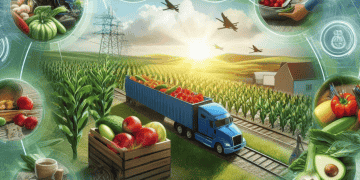In efforts to bolster the efficiency of the farm-to-table supply chain, various stakeholders across the industry have been implementing strategic measures. These initiatives aim to streamline processes from agricultural production to consumer delivery, ensuring fresher products and reduced wastage.
Key players in the agricultural sector are collaborating with logistics experts to optimize transportation routes and storage facilities. By enhancing these logistical aspects, they seek to minimize the time and resources required for transporting perishable goods from farms to dining tables.
Furthermore, advancements in technology have played a crucial role in this transformation. Integration of IoT devices and data analytics helps in monitoring crop conditions, predicting yield volumes, and managing inventory more effectively. This data-driven approach not only improves supply chain visibility but also enables preemptive measures to maintain product quality throughout the journey.
Moreover, partnerships between farmers and local restaurants or grocery chains have been strengthened. This closer collaboration ensures a steady supply of fresh produce while supporting local economies. By shortening the supply chain and reducing intermediaries, these partnerships promote sustainability and transparency.
In conclusion, the ongoing efforts to strengthen the farm-to-table supply chain underscore a commitment to enhancing efficiency and sustainability in the agricultural sector. As these initiatives continue to evolve, stakeholders anticipate further improvements in product quality, reduced environmental impact, and enhanced consumer satisfaction.
Get comprehensive supply chain report news updates at The Supply Chain Report. For international trade tools, see ADAMftd.com.
#FarmToTable #SupplyChainEfficiency #AgriculturalInnovation #LogisticsOptimization #PerishableGoods #IoTInAgriculture #DataDrivenSupplyChain #LocalPartnerships #SustainabilityInAgriculture #FreshProduce #TechInFarming #StreamlinedLogistics #SupplyChainTransparency #EnvironmentalImpact #ConsumerSatisfaction

















